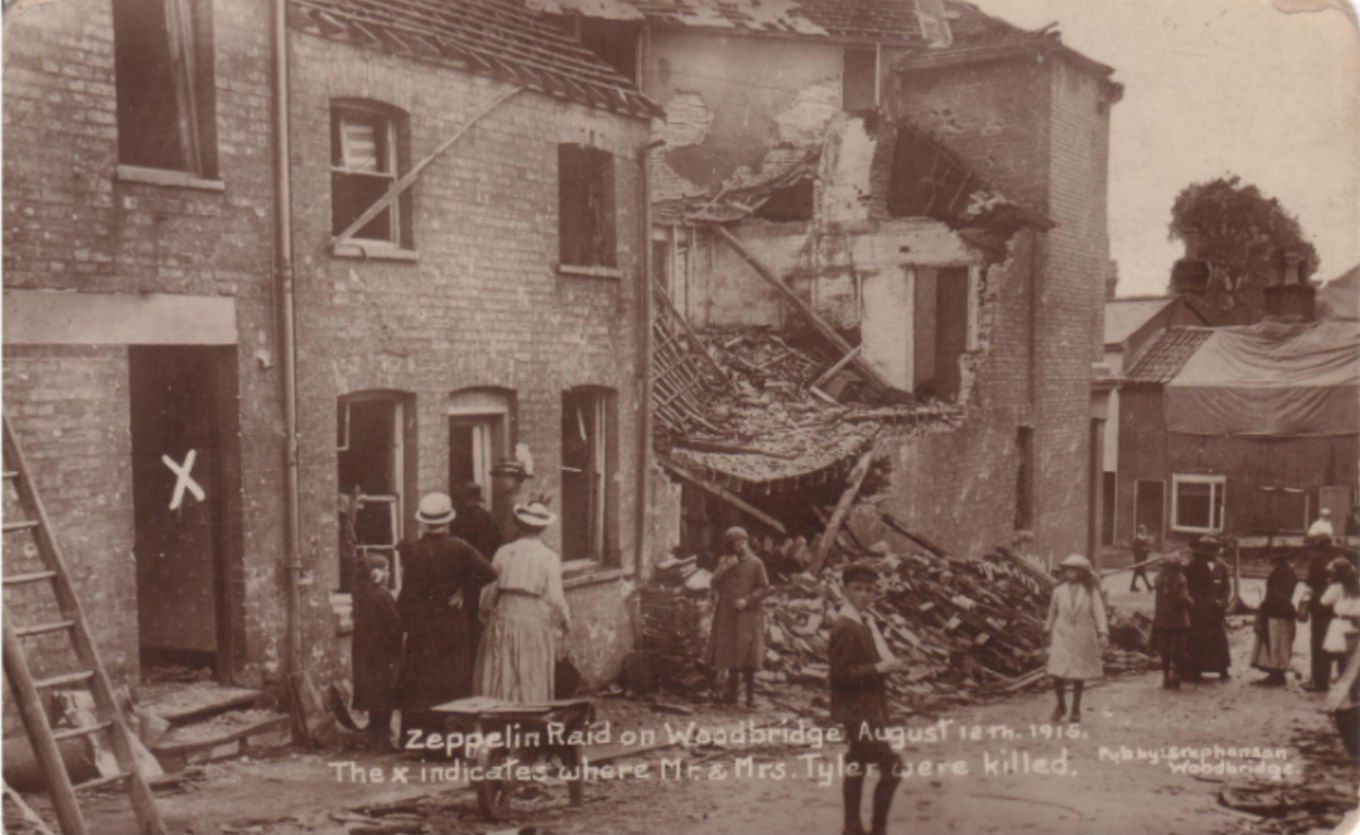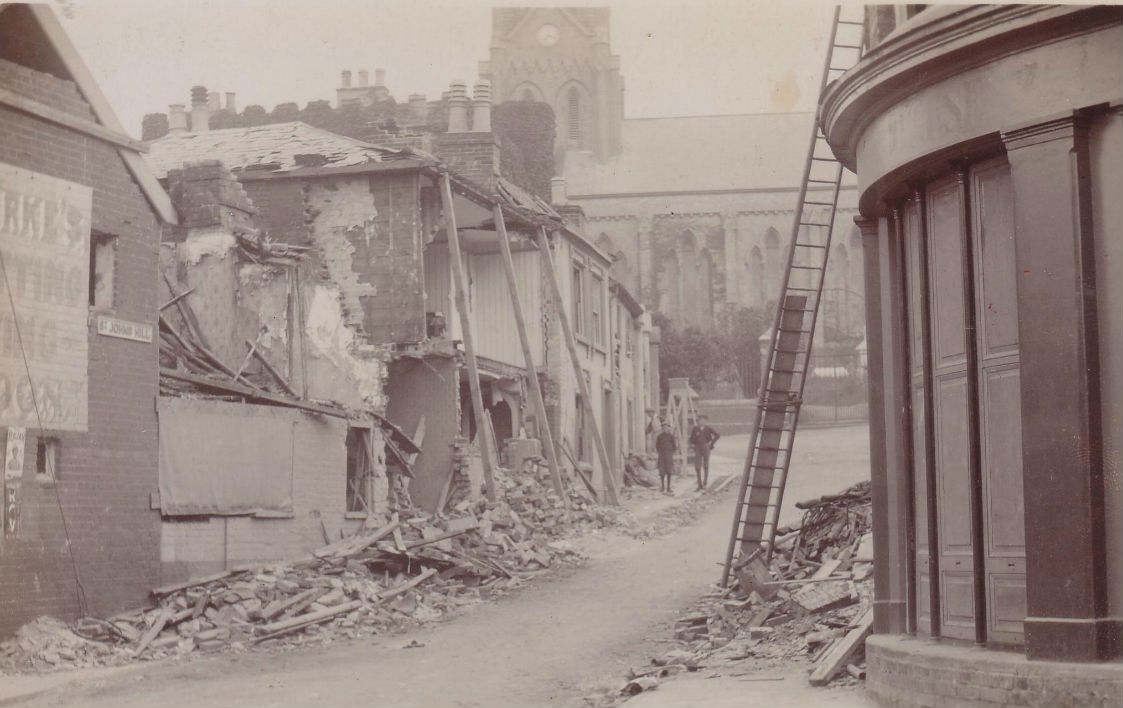ZEPPELINS, GOTHAS & 'GIANTS'
THE STORY OF BRITAIN'S FORGOTTEN BLITZ 1914-1918
12 August 1915
Bombed:
Suffolk & Essex
This raid was another failed attempt by naval airships to reach London. Of four Zeppelins, three turned back early and only L 10, commanded by Oberleutnant-zur-See Wenke, attacked England. Having come inland just south of Lowestoft at 9.25pm and facing a strong headwind, Wenke decided to abandon London in favour of Harwich.
Heading south, L 10 dropped what are recorded as two petrol tanks in fields at Badingham, followed by two flares in fields at Gelham Hall, Wickham Market. Then an incendiary, which caused no damage, dropped in a field owned by H. Sawyer at Pettistree.
The next incendiary fell on the outskirts of Woodbridge, at Melton, on the Wickham Market-Woodbridge road. Arriving over Woodbridge at about 10.20pm, men of the 2nd/3rd London Infantry Brigade engaged L 10 with machine gun and rifle fire. Wenke replied by dropping four explosive and twenty incendiary bombs on the town. The effect on St. John’s Hill was devastating. An explosive bomb landing on the pavement outside 1 St. John’s Hill, claimed six lives. Mr Tyler – a bootmaker - and his wife were standing at the door of 4 St. John’s Hill; the blast killed Mrs Tyler instantly and mortally injured her husband. Edward Turner and Dennis Harris had the misfortune to be in the street as the bomb exploded and were both killed. Another victim, Mrs Eliza Bunn, aged 67, living at 14 New Street, on the corner of St. John’s Hill, died shortly after rescuers carried her from the wreckage of her house. And 16-year-old James Marshall died at 27 New Street, at the end of St. John’s Hill, because he remained in the house to finish his cup of cocoa when his parents left ‘to avoid danger.’
Amongst other places, bombs fell on Castle Street, Bredfield Street, Burkitt Road, Seckford Road and the Ipswich Road. Casualties in Woodbridge amounted to six killed and seven injured.
After Woodbridge, L 10 dropped three incendiary bombs in a field at Kesgrave owned by a Mr Dawson, before encountering gunfire from a mobile AA unit at Rushmere on the outskirts of Ipswich. L 10 dropped four incendiary bombs, which landed in fields owned by Mr. Cooper, before turning away to avoid the defensive fire and continued towards Harwich. A single explosive bomb gouged a great crater on Shotley marshes.
L 10 then dropped eight explosive and four incendiary bombs on the Parkeston area of Harwich. The bombs landed on Parkeston village, about 300 yards from Parkeston Quay, and on the harbour. One bomb, near the power station close to Ray Hill, brought down telephone wires. These bombs injured 17 civilians, demolished four houses and caused extensive damage to others in Tyler Street. L 10 then headed north, dropped two bombs between Fagbury Cliff and Trimley St. Martin before heading out to sea at Aldeburgh at about 11.35pm.
Four aircraft went up from RNAS Yarmouth but all experienced engine problems and returned early without seeing L 10.
St. John's Hill. The X marks where Mr & Mrs Tyler were standing when killed. The house in the background with a tarpaulin on the roof is 27 New Street, where James Marshall died.
(David Marks Collection)
St. John's Hill - showing the opposite side of the road to the previous photo. The bomb exploded outside the building where the outer walls are missing. The building to its left is the back of 14 New Street, where Eliza Bunn died.
(David Marks Collection)
Casualties: 6 killed, 24 injured
Damage: £3,649
Follow Us
© Ian Castle 2021

